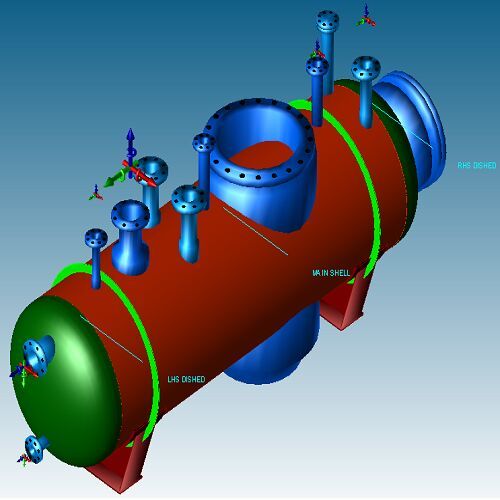
Pressure vessels are integral components in a wide array of industrial processes, from chemical plants and refineries to power generation facilities and even aerospace applications. These closed containers are designed to hold fluids or gases at pressures substantially different from the ambient pressure. Given the inherent risks associated with storing pressurized substances, the design of pressure vessels is a critical engineering discipline that prioritizes safety, reliability, and efficiency.
The design process for a pressure vessel is multifaceted, involving a thorough understanding of material properties, stress analysis, fabrication techniques, and relevant codes and standards. Engineers must carefully consider the intended operating conditions, including the maximum internal or external pressure, temperature range, and the nature of the contained substance. These factors dictate the selection of appropriate materials, typically various grades of steel, which must possess sufficient strength, ductility, and corrosion resistance.
A fundamental aspect of pressure vessel design is determining the required wall thickness to withstand the applied pressure. This involves applying principles of mechanics of materials and employing established formulas derived from thin-walled and thick-walled cylinder theories. Factors such as the vessel's diameter, the design pressure, and the allowable stress of the chosen material are crucial in these calculations. Furthermore, the design must account for potential stress concentrations around openings, nozzles, and supports, often requiring the use of reinforcement techniques.
Beyond the cylindrical shell, the design of the vessel heads (closures) is equally important. Common head types include hemispherical, elliptical, and torispherical, each offering different pressure-bearing capabilities and complexities in fabrication. The selection of the head type influences the overall weight and cost of the vessel.
Safety is paramount in pressure vessel design. Numerous international codes and standards, such as the ASME Boiler and Pressure Vessel Code, provide comprehensive guidelines for design, fabrication, inspection, and testing. Adherence to these codes ensures that vessels are built to rigorous safety standards, minimizing the risk of catastrophic failures. Non-destructive testing methods, such as ultrasonic testing and radiographic examination, are employed to verify the integrity of welds and materials.
In addition to safety, efficient design also considers factors like weight optimization, ease of fabrication and maintenance, and cost-effectiveness. Advanced computational tools, such as finite element analysis (FEA) software, are increasingly used to simulate stress distributions and optimize vessel geometries, leading to more efficient and reliable designs.
In conclusion, pressure vessel design is a complex and critical engineering field that demands a strong foundation in materials science, structural analysis, and adherence to stringent safety regulations. By carefully considering all operational parameters and employing sound engineering principles, pressure vessels can be designed and fabricated to operate safely and efficiently, playing a vital role in numerous industrial processes.